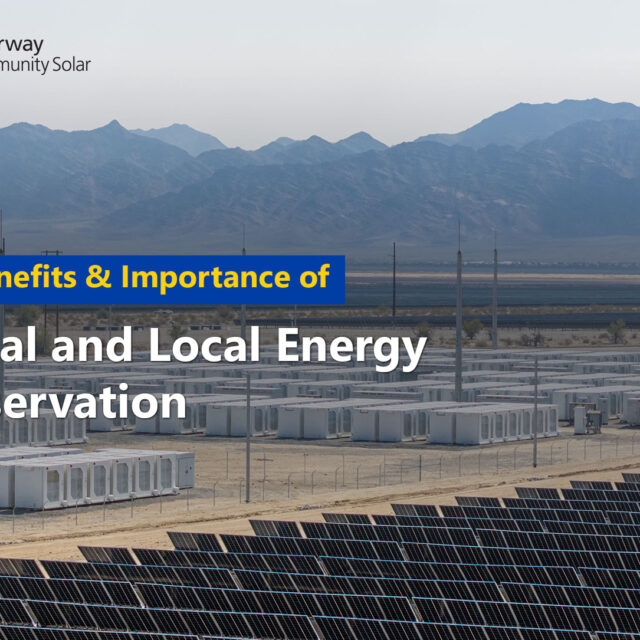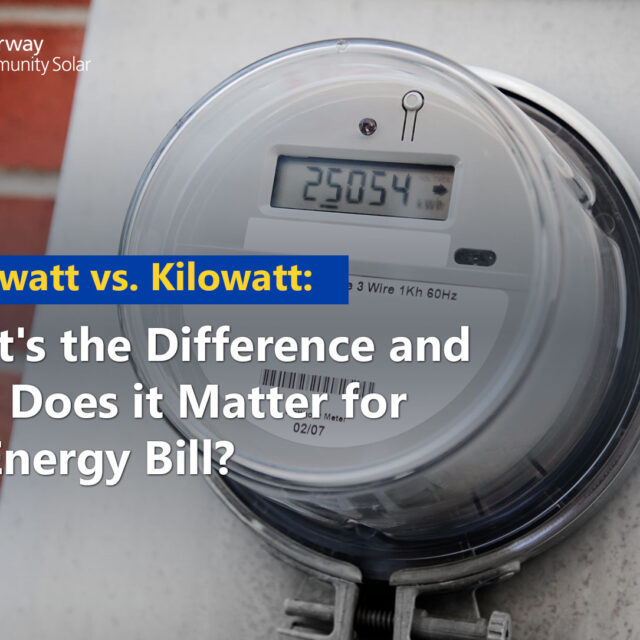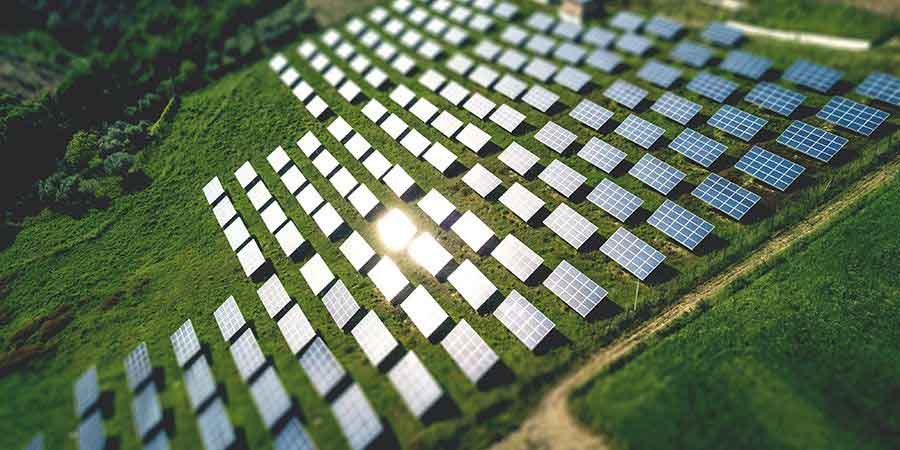
What Are Fossil Fuels?
When someone says the word “fossil fuel,” most of us think of the classic use of fossil fuels to power 60% of our energy mix—oil, natural gas, and coal. But many people do not know a whole lot about fossil fuels other than that burning of fossil fuels as an energy source is harming the environment, and our health, and speeding up climate change. Where do fossil fuels come from? How are they extracted? What makes something a renewable energy source? This article provides an overview of different energy sources dives into these questions, and more.
After plants and animals die, they decompose and are gradually buried by layers of rock and sediments, eventually becoming fossil fuels. It takes millions of years for fossil fuels to develop into their usable form. The fossil fuels we are burning today to power our cars, homes, and fossil fuel industry began forming before dinosaurs ruled the Earth. A combination of organic matter is present, how long it was buried, and the temperature and pressure conditions depend on what different types of fossil fuels can form.
Oil
Crude oil or petroleum used in refineries can be found underground in reservoirs; between the cracks, crevices, and pores in sedimentary rocks; or near the Earth’s surface in tar sands. To gain access to oil, companies must drill for it—either on land or on the seafloor beneath the ocean. To access oil in tar sands and oil shale, lands are typically strip-mined. Any member of the public can nominate a parcel of public lands to be auctioned for oil production. The Bureau of Land Management evaluates the nominations, and drilling leases are sold to the public at bargain prices. The oil and gas industry holds leases to 25 million acres of publicly-owned minerals, an area roughly the size of Kentucky.
In Fiscal Year 2021, the Bureau of Land Management issued almost 5,000 onshore oil and gas drilling permits. In 2021, the United States exported about 8.63 million barrels per day of petroleum. That same year, the United States imported 8.47 million barrels per day of petroleum from other countries—the top five from Canada, Mexico, Russia, Saudi Arabia, and Columbia, respectively.
While there are some obvious advantages to using crude oil as a source of energy, such as our infrastructure already being built around it and that it is relatively cheap, the major disadvantages to relying on oil for energy production are:
- Greenhouse gas emissions and global warming
- Air pollution
- Oil spills/ ocean pollution
- Extraction can destroy habitats or ecosystems
- Reliance on other countries for energy supply
- International conflicts and wars
- Finite resource (nonrenewable)
Natural Gas
Natural gas or fracked gas is made of methane and like oil, is found underground. There are two different categories of natural gas: conventional and unconventional. Conventional natural gas is found in permeable or porous rock beds or can be found within oil reservoirs. This type of natural gas is accessed through conventional drilling. Unconventional natural gas is found in places that are too difficult or expensive to drill conventionally, so a special technique known as hydraulic fracturing “fracking” is required. Fracking involves a mixture of water, sand, and chemicals being forced into an underground rock layer at high pressure to release the gasses inside. Some of the chemicals used in this process include methanol, ethylene glycol, arsenic, benzene, cadmium, and lead. Those chemicals, along with many others used in fracking fluid, are considered hazardous to human health.
Some disadvantages to relying on natural gas and fracked gas to meet the American energy demand are:
- Greenhouse gas emissions and global warming
- Air pollution
- Extraction can destroy habitats
- There have been cases of contaminated drinking water supplies
- Long-term effects of fracking are still unknown
- Finite resource (nonrenewable)
Coal
Coal, a type of carbon-heavy rock, can be found both underground and at Earth’s crust. Underground coal is mined using heavy machinery to cut the coal from deposits. Coal found at the surface is extracted using a process called strip mining, where entire layers of soil and rock are removed from the Earth’s surface to extract the coal.
Of all the fossil fuel sources, coal is considered the dirtiest, and strip mining is the most blatantly destructive process. Coal mining and burning coal are not as economically attractive as other fossil fuel and available renewable energy sources, and many coal plants across the U.S. have been phased out. Still, about 28.1% of the U.S. total energy grid was supplied by coal in 2021.
Some of the disadvantages to relying on coal for energy production are:
- Greenhouse gas emissions and global warming (Coal mining releases methane into the atmosphere, which is 20 times more powerful than carbon dioxide as a greenhouse gas contributor)
- Air pollution
- Extraction destroys landscapes and habitats
- Deforestation and erosion
- Can contaminate groundwater
- Coal fires release noxious fumes into the surrounding community
- Finite resource (nonrenewable)
What are Renewable Resources?
Every time fossil fuels are extracted from their long-time deposits within the Earth’s crust or the surface, the pool of remaining resources becomes more and more depleted. Since fossil fuels take millions of years to form, these resources will not be replenished within our lifetime—which makes them nonrenewable resources.
Renewable energy, on the other hand, comes from resources that are replenished naturally but are flow-limited. Solar power is a renewable energy source because sunlight is available at most latitudes of Earth every day. The sun is a free, clean, and consistent source of heat and light that can be converted into clean energy to power homes, vehicles, and more.
Solar and other types of renewable energy—biomass, hydropower, geothermal, and wind—create electricity without emitting air pollutants, and can play an important role in U.S. energy security and in reducing greenhouse gas emissions.
Take the Next Step Toward a Cleaner, Greener Future
As we continue to learn about the impact of fossil fuels on our environment and the urgency of addressing climate change, it’s essential to explore sustainable alternatives. Take the next step towards a cleaner, greener future by educating yourself about renewable energy options and supporting policies that promote their adoption. Together, we can make a difference and transition towards a more sustainable and eco-friendly energy landscape.
Frequently Asked Questions
Are fossil fuels the only source of energy we have?
No, fossil fuels are just one source of energy. There are also renewable energy sources like solar, wind, hydropower, and geothermal energy, which are more environmentally friendly alternatives.
What are the environmental impacts of using fossil fuels?
Fossil fuels contribute to greenhouse gas emissions, air pollution, habitat destruction, and other environmental problems. They are a major driver of global warming.
Can we run out of fossil fuels?
Yes, fossil fuels are finite resources, and their reserves are depleting. Eventually, we will run out of them, which is why it’s crucial to transition to renewable energy sources.
Why should we consider renewable energy sources?
Renewable energy sources are sustainable, produce fewer greenhouse gas emissions, and can help reduce our dependence on finite fossil fuel resources.
Are there any government initiatives to promote renewable energy?
Yes, many governments worldwide have incentives and policies in place to encourage the adoption of renewable energy technologies and reduce reliance on fossil fuels.









